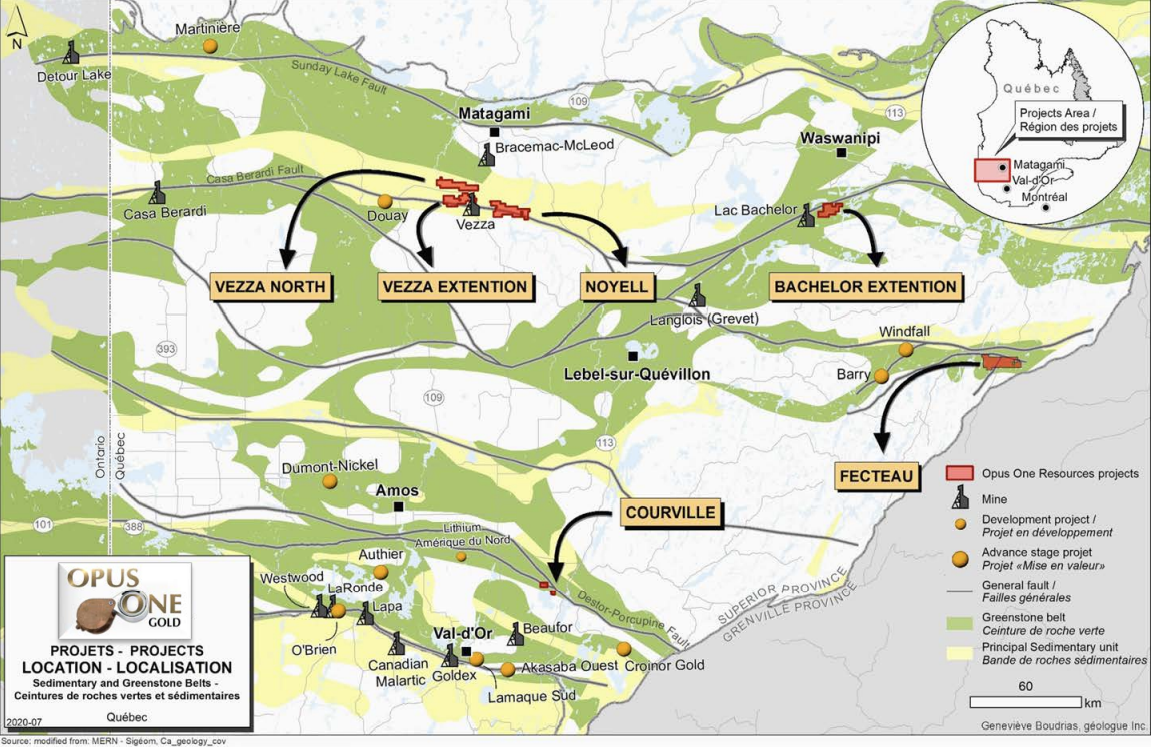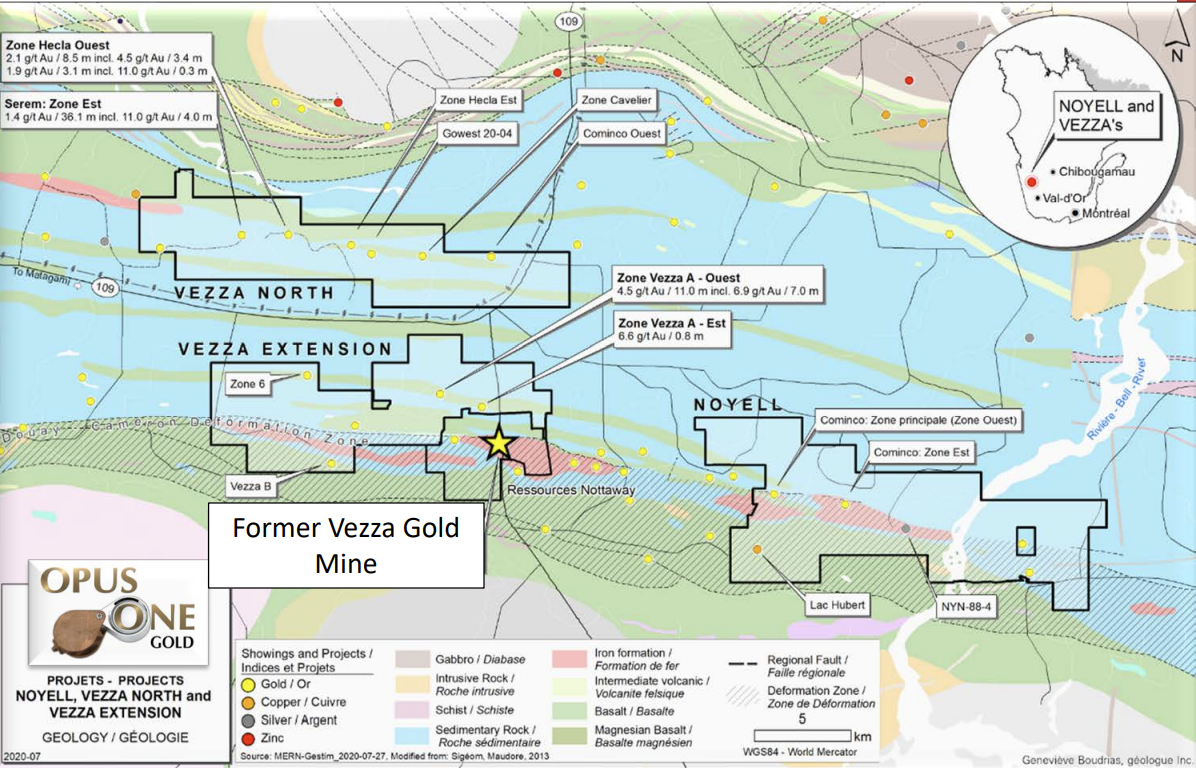CASA-BERARDI-DOUAY-CAMERON PROJECT AREA
Opus One Gold owns three properties along the Casa-Berardi-Douay-Cameron deformation corridors in northern Abitibi for a total of 285 claims covering 10,860 hectares. These properties are located approximately 25 km to the south of the town of Matagami and are easily accessible by all terrain vehicles.
The three properties are located along well recognized gold bearing structures, and they host numerous gold showings. The former producer Vezza Gold Mine is located in between our Vezza Extension and Noyell projects. It is interpreted that similar favourable geological environments could be found on all our projects in the area.
Several mining operations and gold mills are currently active in the area and easily accessible from the properties, including:
- the Casa-Berardi mine and gold mill operation, held by Hecla Mining, with a capacity of 2,400 tpd;
- the Sleeping Geant project and gold mill, held by Mines Abcourt, with a capacity of 900 tpd;
- the Bracemac-McLeod mine and base metal mill facility, held by Glencore, with a capacity of 3,000 tpd;
- the Langlois mine and base metal mill facility, held by Nyrstar, with a capacity of 2,500 tpd;
- the Bachelor mine and gold mill, held by Bonterra, with a capacity of 1,200 tpd.
The Harricana-Turgeon Belt comprises the Matagami and Taïbi volcanosedimentary basins of east-west orientation. The projects are associated with the sedimentary basin of Taïbi which is limited on either side by major structures, namely the Taïbi Fault to the north and the Casa-Bérardi deformation zone to the south, the latter being followed by over 200 km with a thickness greater than five (5) km. As one moves to the east, this ductile structure becomes the Douay deformation zone and then the Cameron deformation zone at the eastern extremity of the Projects. This structure constitutes an important auriferous metallotects within the Abitibi Greenstone Belt.
The sedimentary domain of Taïbi is composed of clastic sediments (sandstone, siltstone and mudstone, locally) associated with turbidites sequences. Iron formations of Algoma type (magnetite chert, jaspe), conglomerates composed of fragments from intrusive (diorite and tonalite) and volcanites (andesite) as well as graphitic argillite levels of kilometric extension are also found in lesser proportions. Mafic volcanic flows (basalt and andesite) and some pyritised rhyolitic tuffs horizons are intercalated in the sedimentary sequence, in a proportion of 10 to 20%. The stratigraphy is roughly oriented east-west, with polarity towards north and dips from 70° to 75° towards south.

